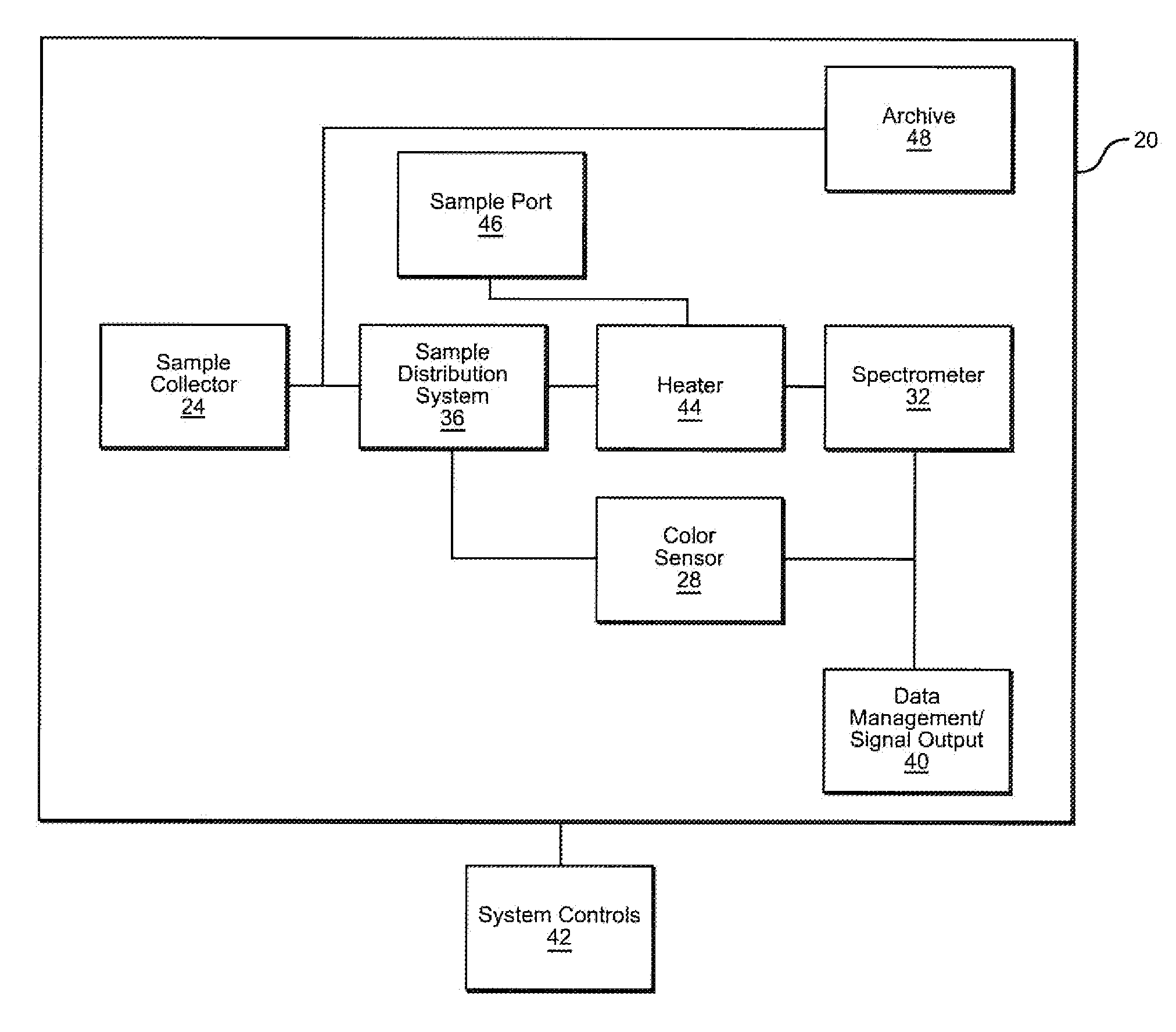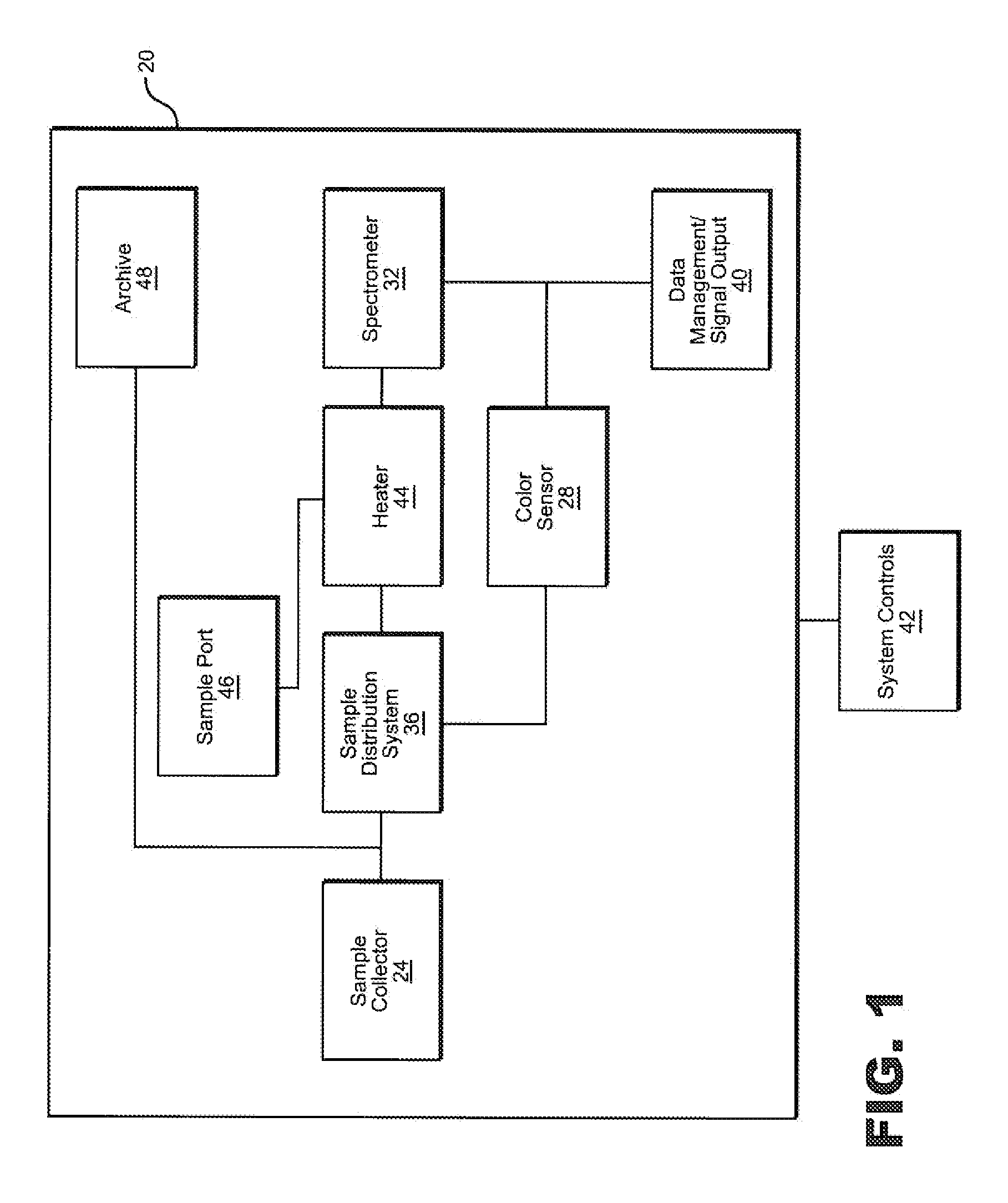Toxic Material Detection Apparatus and Method
a detection apparatus and technology of toxic materials, applied in biochemistry apparatus and processes, specific use bioreactors/fermenters, after-treatment of biomass, etc., can solve the problems of cholinesterase inhibitors that are either too slow or too slow to be useful for real-time detection, and achieve high specificity, reduce the probability of false positive response, and processing fast
- Summary
- Abstract
- Description
- Claims
- Application Information
AI Technical Summary
Benefits of technology
Problems solved by technology
Method used
Image
Examples
Embodiment Construction
With initial reference to FIG. 1, a near-real time HTM detection system of the present invention is generally indicated at 20. System 20 is an orthogonal detection system (i.e., system based on dissimilar detection principles) for analyzing environmental samples including plural detectors in parallel or in series to increase the probability of HTM detection and decreases false positives. More specifically, detection system 20 includes a sample concentrator or collector 24, a color sensor 28 (e.g. colorimeter or spectrophotometer), an ion mobility spectrometer (IMS) 32, a sample distributing system indicated at 36 and a data manager and signal output 40. Detection system 20 also includes various system controls indicated at 42. A heater 44 is in fluid communication with spectrometer 32, and is also in communication with a sample port 46 adapted to receive swab samples or the like not collected through collector 24. Additionally, detection system 20 preferably includes an archive port...
PUM
 Login to View More
Login to View More Abstract
Description
Claims
Application Information
 Login to View More
Login to View More - R&D
- Intellectual Property
- Life Sciences
- Materials
- Tech Scout
- Unparalleled Data Quality
- Higher Quality Content
- 60% Fewer Hallucinations
Browse by: Latest US Patents, China's latest patents, Technical Efficacy Thesaurus, Application Domain, Technology Topic, Popular Technical Reports.
© 2025 PatSnap. All rights reserved.Legal|Privacy policy|Modern Slavery Act Transparency Statement|Sitemap|About US| Contact US: help@patsnap.com



